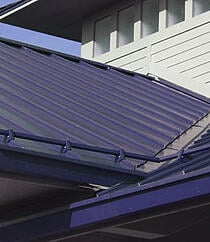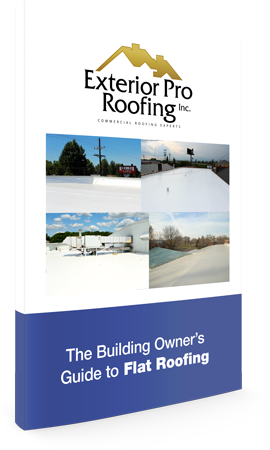This has been one of the snowiest winters in recent memory. The sheer volume of snow is causing schools, businesses, and government offices to close. Massive snowfall events that New Englanders are experiencing, place an immense amount of stress on rooftops, and the fear of roof collapse is warranted.
As Robert Haddock, Director of the Metal Roof Advisory Group, explains, metal roofs are widely used in areas where snow is a natural winter phenomenon. Metal responds well to the ravages of nature. Unfortunately, one extremely important consideration is often overlooked in the design of metal roofs used in cold areas. This consideration, and one that applies to any rooftop in snowy areas, is the snow load the roof may have to bear.
Understanding the Dangers of Snow Loads on Rooftops
Snow density is an important factor in determining snow loads on rooftops. Conditions in the atmosphere and geography influence snow. Important factors contributing to the wide variation in snow densities from place to place include altitude, humidity, region, and even season.
How Snow and Ice Depth Translate to Weight on Roofs
According to FEMA’s Snow Load Guide, one foot of fresh, light, dry snow weighs roughly three pounds per square foot. One pound of heavy, wet snow is equal to about 21 pounds per square foot. Because ice doesn’t vary in density in the way that snow does, the weight of ice is more straightforward.
A one-inch layer of ice on a rooftop weighs a little less than five pounds per square foot. A foot of ice, on the other hand, would be equal to 57 pounds per square foot. The reason to think about the weight of ice on a rooftop is quite simple. As snow gradually melts, colder temperatures freeze that water, causing ice dams to form. Ice dams are as dangerous as snow accumulations on a rooftop.
The Dangers of Unbalanced Snow Loads
The phenomenon of unbalanced snow loads is a serious problem for all roofs. It wasn’t included in any building code until 1988 when the Uniform Building Code added it. Drifting and sliding snow are the leading causes of unbalanced snow loads. An unbalanced snow load occurs when snow drifts or slides to different parts of the roof. When more snow accumulates in one area of a roof, that area is forced to bear the burden of the weight of that snow.
Drifting Snow is the technical term that explains what happens when snow blows snow to different parts of the roof. Drifts typically occur where there are obstructions from rooftop equipment or structural parts of the building. They may also occur along eaves or other part of the roof that is protected from the wind. Sloped roofs are susceptible to sliding snow. The steeper the roof’s slope, the greater the risk of snow slides.
Ice dams pose another problem that is directly linked to drifting and sliding snow. Rapid temperature changes can cause melting in the areas where snow drifted, or where snow winds up after sliding off a steep slope. A combination of changes in outdoor temperature and contact with the warmer part of the roof causes the melting. When temperatures start to drop, water from the melted snow will freeze again. You can always tell when a building has an ice dam problem because you will see huge icicles dangling from the edge of the roof.
Mike Huber, PE, explains that metal roofs should be designed to support the weight of snow accumulations. The design should also provide a safe way for snow and ice to escape the roof. Concentrations of snow will accumulate on roofs with steep or fewer steep slopes. The design of your snow retention system should consider the following factors:
- The estimated weight of snow load per square foot
- How steep the pitch of the roof is because the greater the slope, the heavier the snow load the snow guards will have to support.
- How large the weight burden snow drifts are imposing on the roof is.
- The Vector Force – or how much the snow load weighs in relation to the roof’s slope.

Snow guards are supposed to provide a barrier to keep snow from sliding off a pitched roof, and destroying property below, or hurting people in the path of the snow. There are two methods for attaching snow guards to a roof – adhering them or fastening them. A snow fence is an alternative to snow guards. Snow fences are clamped or fastened to roofs.
Before you actually buy a snow retention device for your metal roof, contact a structural engineer or a company that makes this equipment. You need to choose a product that is capable of supporting the snow load your roof carries.







